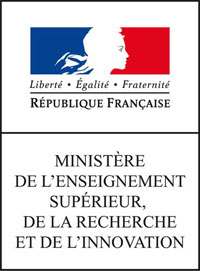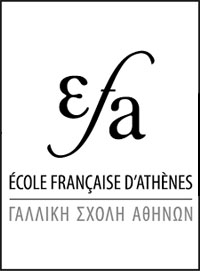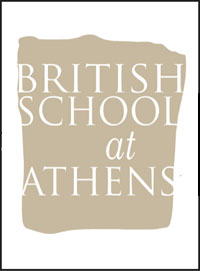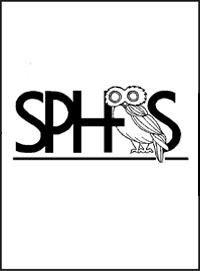Athens - Agora - 2022
Informations Générales
Numéro de la notice
18538
Année de l'opération
2022
Chronologie
Mots-clés
Nature de l'opération
Institution(s)
Toponyme
Notices et opérations liées
Description
Athenian Agora. John McK. Camp II (ASCSA) reports on work conducted in 2022 on the south and north of the Stoa Poikile and within the western third of the building (Fig. 1).
The initial plan of excavating under the modern house at 14 St. Philip Street was curtailed by delayed demolition. This report is being written in the final week of the excavation, when many objects band remains tend to come to light, so not everything can be included in time to print and distribute it.
Beta Theta East was supervised by Nick Seetin, assisted by Jacob Seaton. Αdditional Byzantine levels were explored as the Leokoreion had been heavily sheltered to prevent any possible rockfalls from the intended adjacent demolition. More of several rooms were exposed, south of the Poikile Stoa, including one with two well-preserved pithoi, used for storage, their mouths giving a clear sense of the floor levels in use at the time. A crudely paved area and drain near the mouth of one of the pithoi seems to have been used to manage liquids in the area (Fig. 2).
In Beta Theta West the work was supervised by Vassia Dimitrakopoulou, assisted by Jackson Vaughn. Τhe excavators explored the later levels within the west end of the Painted Stoa, removing layers of early Byzantine and latest Roman fills underneath the Middle Byzantine rooms and above the floor levels of the Classical Stoa. An Ionic column base of Pentelic marble was found built into one of the late walls and matches another found years ago some 20 meters to the west, suggesting that they are part of a large unrecognized monument or building in the area. Both have been cut in a way which suggests they were reused set up against a rectilinear element, presumably a wall or anta (Fig. 3).
More of the lowest step of the façade of the Poikile Stoa was revealed for the first time near its western end. As elsewhere, the well-cut hard limestone step-blocks are joined by substantial double-T clamps, with blocks of a much softer limestone used as backers (Fig. 4).
To the north, in Section BZ, an area of fallen late Roman walls was cleared, as well as a collapse caused by unusually heavy rains during the winter. Finds included a fragmentary late Hellenistic inscription (2nd BC) concerning an associate of one of the Antiochid kings of Syria (Fig. 5). Lower down the late Archaic/early Classical layers were excavated, along with the usual collection of ostraka, probably discarded in the 480’s: as in the past, Xanthippos, the father of Perikles, was relatively common in this year’s collection, along with Themistokles and Aristeides (Fig. 6). Lesser-known candidates included Habron, Acharnion, and Knoithon. This year over 80 new ostraka were recovered from deposit J 1-2:1, bringing the total to more than 160. Several of the ostraka demonstrated serious examples of dyslexia and specific insults for targeted individuals. Late archaic levels included some well defined floor levels, high-quality pottery, and another embedded amphora. Traces of Mycenaean pottery and half of a small ivory inlay of some sort presumably came originally from furnishings of disturbed Mycenaean tombs which were dug into the underlying bedrock (Fig. 7).
A separate small excavation to clean up and clarify several issues prior to publication was carried out at the Crossroads Enclosure in section Beta Gamma. A fragmentary inscription was found in the fabric of the later Roman round structure which partially overlies the enclosure. It concerns honors for the prytaneis of the tribe of Hippothontis and their officials in the 1st century BC (Fig. 8).
The initial plan of excavating under the modern house at 14 St. Philip Street was curtailed by delayed demolition. This report is being written in the final week of the excavation, when many objects band remains tend to come to light, so not everything can be included in time to print and distribute it.
Beta Theta East was supervised by Nick Seetin, assisted by Jacob Seaton. Αdditional Byzantine levels were explored as the Leokoreion had been heavily sheltered to prevent any possible rockfalls from the intended adjacent demolition. More of several rooms were exposed, south of the Poikile Stoa, including one with two well-preserved pithoi, used for storage, their mouths giving a clear sense of the floor levels in use at the time. A crudely paved area and drain near the mouth of one of the pithoi seems to have been used to manage liquids in the area (Fig. 2).
In Beta Theta West the work was supervised by Vassia Dimitrakopoulou, assisted by Jackson Vaughn. Τhe excavators explored the later levels within the west end of the Painted Stoa, removing layers of early Byzantine and latest Roman fills underneath the Middle Byzantine rooms and above the floor levels of the Classical Stoa. An Ionic column base of Pentelic marble was found built into one of the late walls and matches another found years ago some 20 meters to the west, suggesting that they are part of a large unrecognized monument or building in the area. Both have been cut in a way which suggests they were reused set up against a rectilinear element, presumably a wall or anta (Fig. 3).
More of the lowest step of the façade of the Poikile Stoa was revealed for the first time near its western end. As elsewhere, the well-cut hard limestone step-blocks are joined by substantial double-T clamps, with blocks of a much softer limestone used as backers (Fig. 4).
To the north, in Section BZ, an area of fallen late Roman walls was cleared, as well as a collapse caused by unusually heavy rains during the winter. Finds included a fragmentary late Hellenistic inscription (2nd BC) concerning an associate of one of the Antiochid kings of Syria (Fig. 5). Lower down the late Archaic/early Classical layers were excavated, along with the usual collection of ostraka, probably discarded in the 480’s: as in the past, Xanthippos, the father of Perikles, was relatively common in this year’s collection, along with Themistokles and Aristeides (Fig. 6). Lesser-known candidates included Habron, Acharnion, and Knoithon. This year over 80 new ostraka were recovered from deposit J 1-2:1, bringing the total to more than 160. Several of the ostraka demonstrated serious examples of dyslexia and specific insults for targeted individuals. Late archaic levels included some well defined floor levels, high-quality pottery, and another embedded amphora. Traces of Mycenaean pottery and half of a small ivory inlay of some sort presumably came originally from furnishings of disturbed Mycenaean tombs which were dug into the underlying bedrock (Fig. 7).
A separate small excavation to clean up and clarify several issues prior to publication was carried out at the Crossroads Enclosure in section Beta Gamma. A fragmentary inscription was found in the fabric of the later Roman round structure which partially overlies the enclosure. It concerns honors for the prytaneis of the tribe of Hippothontis and their officials in the 1st century BC (Fig. 8).
Auteur de la notice
Georgios Mouratidis
Références bibliographiques
Unpublished field report, ASCSA
Date de création
2023-02-07 10:31:16
Dernière modification
2024-02-14 09:53:52
Figure(s)








